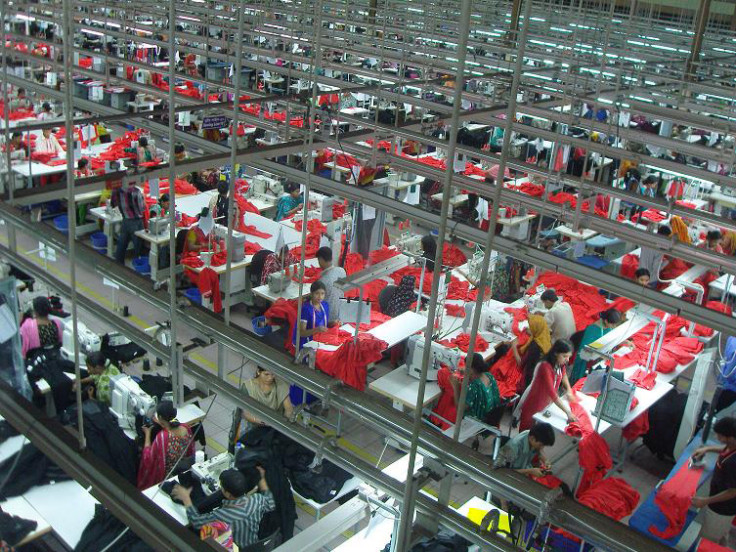
Bangladesh's garment sector, the lifeblood of its economy, faces uncertainty as fresh labour law changes raise fears of disruption and declining investor confidence.
The government in Dhaka is weighing an amendment that would allow workers to form unions with the backing of just 20 employees, replacing the current requirement that 20 percent of a factory's workforce must agree. Officials say the reform would empower employees, especially in smaller workplaces where organising has long been difficult.
But industry leaders see it differently. The Bangladesh Employers Federation, along with garment and knitwear associations, has warned that the proposal risks splintering labour relations. Allowing multiple small unions inside the same factory, they argue, could fuel rivalries, trigger strikes, and erode productivity at a time when reliability is the deciding factor for investors and buyers alike.
This matters because the garment industry is the backbone of Bangladesh's economy. In the last fiscal year, it generated nearly $40 billion in exports, more than four-fifths of the national total. The sector contributes over a tenth of GDP, supports around four million jobs, and attracts the largest share of foreign direct investment, drawing about $435 million last year. Any disruption would ripple quickly through foreign reserves, employment, and the country's broader economic stability.
And these risks extend beyond Bangladesh's borders. Reliability of delivery has become a decisive factor in global apparel supply chains, where fast fashion retailers expect precision timing. Analysts estimate that even a 10 percent increase in missed shipments could cost Bangladesh $4–5 billion annually. Risk-averse buyers may also be unwilling to wait for disputes to be resolved when rival sourcing options are readily available.
By contrast, Bangladesh's biggest trade competitor, Vietnam, secured nearly $30 billion in foreign investment commitments in 2024 and is increasingly seen as a dependable alternative. India and Indonesia are also expanding capacity, eager to capture contracts that previously went to Bangladesh. Even slight reputational damage could accelerate this shift.
The timing is especially sensitive. Next year, Bangladesh is due to graduate from least developed country status, a milestone often framed as proof of progress. Yet it also means losing duty-free access to the European Union under the Everything But Arms scheme, exposing exports to new tariffs and stricter rules of origin. If international buyers simultaneously perceive labour unrest, the double blow could accelerate the migration of orders abroad. And the World Bank has already warned that apparel exports could shift elsewhere unless competitiveness is reinforced.
Against this backdrop, employers are not rejecting reform outright but are pushing for balance. Some propose thresholds that vary by factory size, preventing small groups from dominating labour relations in large plants. Others cite the U.S. model, where 30 percent of workers must support a petition before a union election can take place. Vietnam's model of a single state-supervised union per enterprise is also seen as a guarantee of predictability, although critics argue it limits autonomy.
These concerns have drawn international attention, including from the International Labor Organization, which stressed the need for tripartite dialogue to secure consensus. Without it, experts warn, reforms could aggravate tensions rather than resolve them. Many argue that effective worker representation requires not only thresholds but also professionalisation: training, accountability, and credible dispute resolution mechanisms to ensure unions serve long-term interests rather than short-term bargaining.
Placed in the context of Bangladesh's broader economic story, the stakes become even clearer. Over the past decade, the country has grown by more than 6 percent annually, powered by garments as its central engine. That growth has lifted millions from poverty, financed infrastructure, and propelled the country towards middle-income status. Yet dependence on a single sector has also created fragility, leaving the economy vulnerable to shocks. A misstep that undermines competitiveness in garments risks destabilising the very growth model on which Bangladesh's success has been built.
That fragility is why the stakes are so high. Having relied for decades on garments to power growth, Bangladesh now risks destabilising the very model that lifted millions from poverty. A single misstep in labour reform could erode the competitiveness on which its success has depended.
The question is no longer whether the country needs reform, but whether it can be designed without undermining investor trust and export reliability. If it fails, Bangladesh could see orders and capital drift to rivals. If it succeeds, it will reinforce its status as a cornerstone of the global apparel trade.







